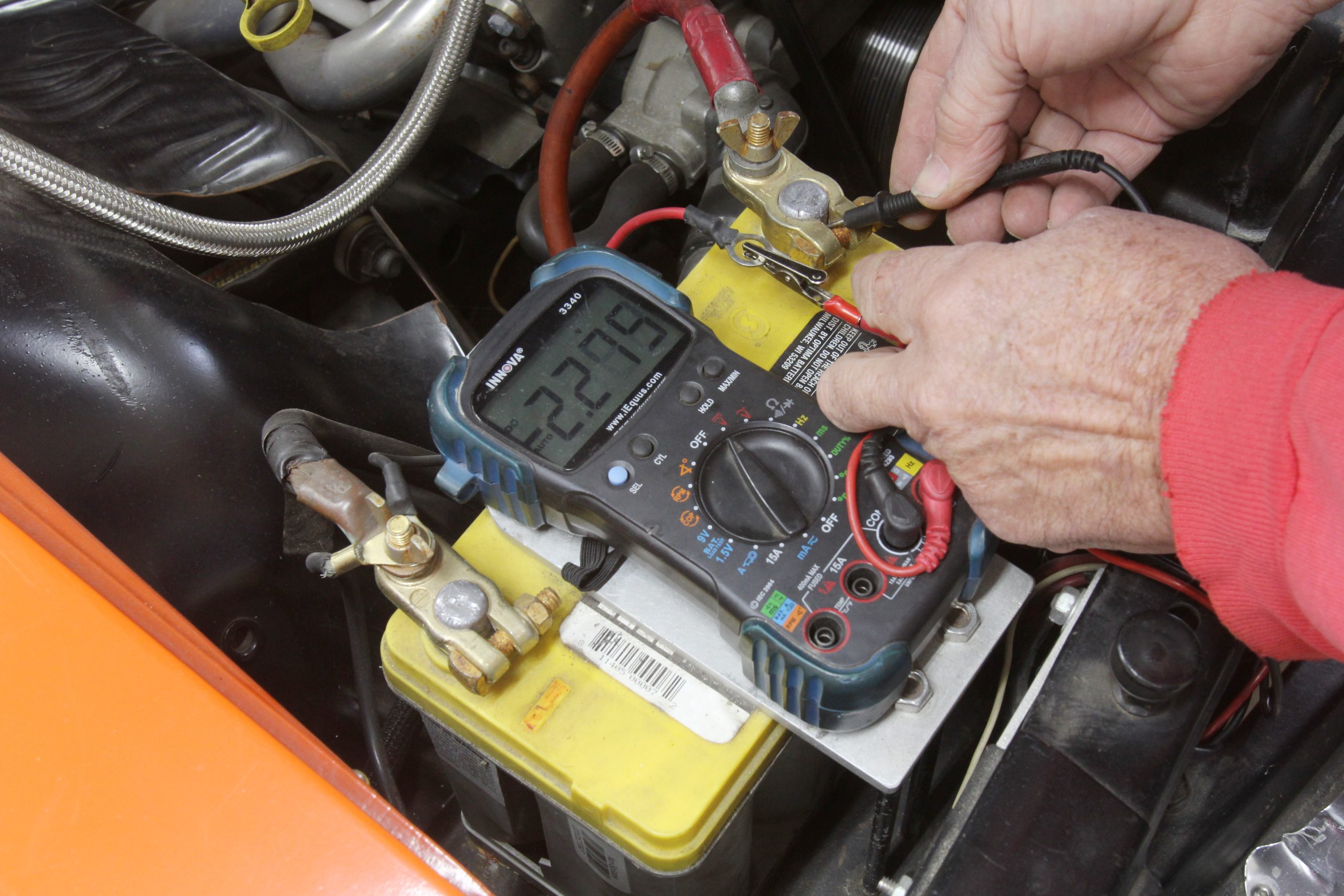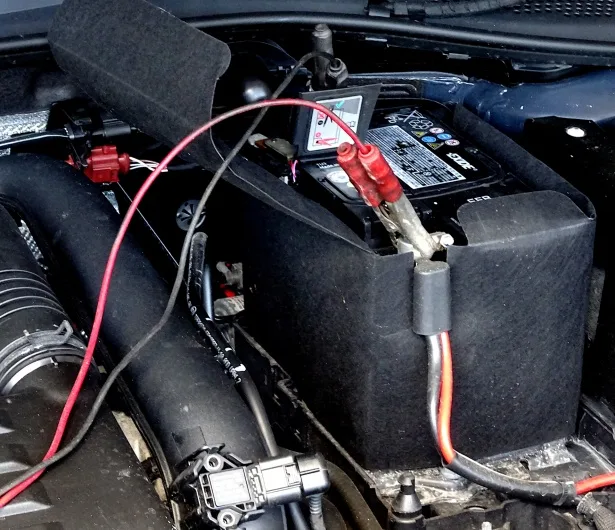Understanding the Basics of service Battery Charging Systems
A service battery charging system supplies electricity to the battery and keeps it charged. It converts AC power from the alternator into DC current that is used to charge the battery. The battery charging system also regulates the voltage and current that is supplied to the battery. The main components of the battery charging system are the alternator, battery, regulator, and wiring harness.
The alternator is responsible for generating the electricity that is used to charge the battery. The regulator is used to control the voltage that is supplied to the battery and prevent it from overcharging. The wiring harness connects all the necessary components and ensures that the power is properly distributed. By understanding the basics of a battery charging system, you can ensure that it is working properly and that your battery is properly charged.
Identifying Battery Charging System Problems
When examining a vehicle for a service battery charging system problem, one of the first items to inspect is the dashboard warning lights. If the battery or charge light is illuminated, this could indicate a problem within the system. The cause of the warning light could range anywhere from a loose electrical connection to a failing alternator.
Another sign of a possible service battery charging system problem is if the battery is consistently running down or dying. Check the battery terminals for signs of corrosion and that all of the connections are tight and secure. If the battery is visibly damaged or swollen, it could be an indication that the battery needs to be replaced. Additionally, if the battery is several years old, it could be losing its charge faster than when it was new. Make sure to take the age of the battery into consideration when diagnosing the charging system.
Diagnosing the Battery Charging System
To diagnose a service battery charging system, it's important to look at the battery itself. Checking voltage and specific gravity will determine if the battery is not charging properly. If it is determined that the battery is not charging correctly, it is likely that the charging system itself is malfunctioning.
It is possible to test other components of the charging system as well, such as the alternator, voltage regulator, and wiring. Issues with any of these components can lead to incorrect charging. To get a more accurate reading, a multimeter can be used to measure the voltage output of the system. This will help pinpoint any areas that need to be serviced or replaced.

Replacing or Repairing the Battery Charging System
Replacing the service battery charging system can involve extensive work, especially if the system is mounted internally in the vehicle. If necessary parts are not on hand at the repair shop, then they must be ordered and the replacement of the battery charging system may be held up until they arrive. The parts must be installed carefully and securely, and the system must be tested for correct operability.
Repairing the service battery charging system is often less labor intensive than replacing it, as the parts are already in the vehicle and do not need to be ordered. The components must be fixed or replaced, and then the system must be tested to make sure it is functioning correctly. Careful consideration should be taken when checking connections and contacts to ensure everything is secure and free from corrosion.
Troubleshooting the Battery Charging System
To properly troubleshoot any service battery charging system, it is essential to first understand and identify any possible problems with the system. This can involve checking the battery, its connections, or the strength of the charging circuit. It is also important to test the voltage of the charging system and make sure it is operating correctly. Additionally, make sure the voltage regulator of the vehicle is functioning appropriately.
If any problems arise with the service battery charging system, it is important to identify the source of the issue and determine the best course of action. This can involve replacing or repairing components of the system, cleaning the battery connections, or checking the current draw. Diagnosing and solving any issues with the battery charging system can help make sure you are getting the most efficient and effective power supply for your vehicle.
Identifying Battery Charging System Components
To identify the components of a service battery charging system, it is important to look for the source of power, such as a generator or a battery charger. The wiring harness will also connect the charging system components to the battery in order to provide and transfer the power needed for charging. Additionally, regulators and circuit breakers play a role in controlling the current and ensuring a safe charging system. Look for these components to identify a battery charging system.
Furthermore, the electrical components will have cables and connectors that connect them which will need to be inspected and tested for proper connections. The components of the battery charging system may also have fuses and overload and short-circuit protection devices that help provide additional safety. Be sure to check these items to ensure a battery charging system is properly assembled.
Checking the service battery charging system Connectors
The first step in properly checking the service battery charging system is to inspect all of the connectors. These connectors will generally be either clips, sockets, or quick-release connectors located on the alternator, battery, voltage regulator, and other major components. Make sure the connectors are securely connected and in good working condition, without any evidence of corrosion or other problems.
It is also important to perform a continuity check on the charging system to ensure that it is working as it should. This can be done by using a multimeter to check that each connector is properly connected and that they are passing the right amount of voltage. In addition, check the wiring for any signs of corrosion or other damage. Replace any damaged or corroded wires immediately to prevent further problems with the service battery charging system.
- Inspect all connectors (clips, sockets, quick-release) on the alternator, battery, voltage regulator and other major components.
- Ensure that the connectors are securely connected and in good working condition without any evidence of corrosion or other problems.
- Perform a continuity check on the charging system using a multimeter to ensure it is properly connected and passing the right amount of voltage.
- Check wiring for signs of corrosion or damage and replace any damaged wires immediately.

Testing the Battery Charging System Voltage
It is important to test the service battery charging system voltage in order to make sure the system is working properly. Using a voltmeter, set to a DC voltage setting, check the voltage of the battery while the vehicle is off. The battery should read between 12.6 and 13.8 volts. If the battery is not within that range, then it could indicate a problem with the battery charging system.
Next, start the engine and check the voltage with the engine running. The voltage should remain stable and roughly between 13.5 and 14.5 volts. If the voltage is not within this range, then it could indicate a problem with the voltage regulator, alternator, wires, or the battery itself. If the voltage reading still isn't within the acceptable levels, it is advisable to consult a professional for further diagnosis.

Cleaning the Battery Charging System Components
It is important to regularly clean the battery charging system components to ensure maximum performance and battery life. This can be done by wiping down the exposed terminals on the battery or removing buildup from the connectors and wires. Cleaning the exposed terminals with a simple solution of baking soda and water can help remove buildup and oxidation from the battery surface.
In order to prevent a buildup of corrosion, the connections and wires should be checked regularly and any corrosion should be scraped away gently with a small metal brush. Next, use a clean rag to dry all the components and then apply a thin even layer of petroleum-based grease to the connections and wires. This will help prevent oxidation and ensure a reliable connection.
Maintenance Tips for Battery Charging Systems
It is important to keep your battery charging system clean in order to ensure efficient and reliable operation. Regular cleaning can help to prevent corrosion and debris buildup, and will help to maintain current flow in the system. Use an electrical contact cleaner to thoroughly clean all electrical contact surfaces of the battery charging system periodically.
To extend the life of your battery charging system, it is critical to regularly inspect all of the components and make sure that the fluid levels and connections that make up the system are intact. If any components are found to have excessive wear or tear, it is important to have them replaced as soon as possible. Regular inspections can help to identify issues before they become major problems and lead to higher costs in the long run.
FAQ's
What is a Battery Charging System?
A battery charging system is a device which is designed to recharge a battery in order to maintain its functionality. It works by regulating the flow of electricity to the battery, allowing it to be charged and recharged as needed.
What are some common problems with Battery Charging Systems?
Some of the most common problems with Battery Charging Systems include corrosion of the connectors, voltage drops, and improper connection. Other issues can arise from dirt or debris clogging up the components of the system, or from a worn-out component.
How can I identify problems with my Battery Charging System?
To identify any problems with your Battery Charging System, you should first inspect the components for any signs of damage or wear. Additionally, you should check the battery voltage and the connection of the system. If there are any irregularities or discrepancies, it is likely that there is an issue with your system.
What should I look for when diagnosing a Battery Charging System?
When diagnosing a Battery Charging System, you should look for any signs of corrosion, wear, or damage. Additionally, you should check the battery voltage and charging system connectors to make sure they are properly connected and functioning correctly.
How can I replace or repair my Battery Charging system?
If the Battery Charging System needs to be replaced or repaired, you should consult a professional mechanic or technician. They can assess the issue and advise you on the best course of action for repairing or replacing the system.
What components should I look at when troubleshooting my Battery Charging System?
When troubleshooting your Battery Charging System, you should look at the battery, the charging system connectors, and the charging system voltage. Additionally, you should inspect the components of the charging system for any signs of dirt or debris that may be clogging up the components.
What should I do to ensure my Battery Charging System is functioning correctly?
To ensure your Battery Charging System is functioning correctly, you should check the battery voltage, inspect the system for any signs of corrosion or wear, and make sure all components are connected and working properly. Additionally, you should clean the system components regularly to remove any dirt or debris that may be clogging up the system.




